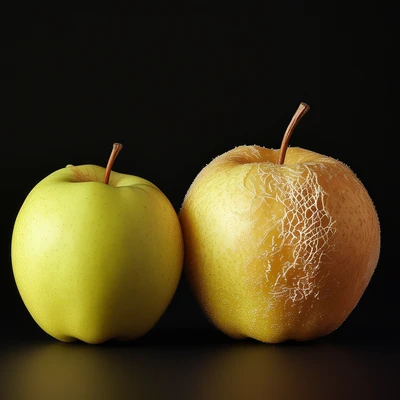Apples and pears are both excellent choices when looking for fruits rich in fiber, vitamins, and minerals.
The consumption of apples and pears contributes positively to overall health, particularly gut health.
While both fruits offer substantial benefits, pears contain a slightly higher amount of dietary fiber compared to apples.
Both apples and pears provide essential nutrients including vitamins, minerals, and dietary fiber. Pears have marginally more fiber, making them advantageous for individuals aiming for higher fiber intake. On the other hand, apples are richer in vitamin C compared to pears.
- Apples
- Pears
- Fiber content
- Shelf life
- Texture
- Vitamins
Including dietary fiber in your diet is vital for enhancing overall health. Fiber plays a critical role in digestive processes and the gut microbiome, helping to prevent conditions such as diarrhea and constipation.
The benefits of consuming adequate fiber include reducing the risk of heart disease, stroke, high blood pressure, obesity, type 2 diabetes, and certain cancers.
According to the U.S. Department of Agriculture, women should consume 22-28 grams of fiber daily, while men need 28-34 grams. Unfortunately, 90% of American women and 97% of men do not meet these fiber intake recommendations.
Soluble fiber dissolves in water, forming a gel-like substance as it passes through the digestive system. This type of fiber aids in regular bowel movements and promotes improved gut health along with better cholesterol levels.
Insoluble fiber does not dissolve in water and adds bulk to stool, assisting in managing constipation.
The ratio of insoluble to soluble fiber is similar between apples and pears (approx. 70% insignificant fiber and 30% soluble). The fruit peels significantly contribute to the total fiber content in these fruits.
Apples are a convenient and flexible food choice, serving as a dietary staple due to their combination of beneficial compounds like fiber, antioxidants, and micronutrients.
The peel of an apple, in particular, is rich in fiber and antioxidants. Consuming apples with the skin provides more benefits than eating just the flesh alone.
Antioxidants found in apples help neutralize harmful free radicals in the body that can impact overall health.
A small apple (165 grams) contains:
- Water: 140g
- Energy: 101 kcal
- Carbohydrate: 24.4g
- Fiber: 3.46g
- Sugars: 19.9g
- Potassium: 172 mg
- Iron: 0.05 mg
- Magnesium: 8.25 mg
- Vitamin A: 4.95 mcg
- Vitamin C: 7.59 mg
- Zinc: 0.03 mg
Similar to apples, pears also contain fiber, antioxidants, and various micronutrients. The breakdown of pear fiber is approximately 71% insoluble and 29% soluble.
Consuming the peel of a pear is crucial for obtaining all the nutrients from the fruit as it contains about 25% of its vitamin C content.
- Water: 124g
- Energy: 84.4 kcal
- Carbohydrates: 22.5g
- Fiber: 4.59g
- Sugars: 14.4g
- Potassium: 172 mg
- Iron: 0.27 mg
- Magnesium: 10.4 mg
- Vitamin A: 1.48 mcg
- Vitamin C: 6.36 mg
- Zinc: 0.15 mg
A study has revealed that consuming either apples or pears, or both combined, is linked to a lower body mass index (BMI) and decreased risk of cerebrovascular diseases, cardiovascular-related deaths, type 2 diabetes, and mortality from all causes.


